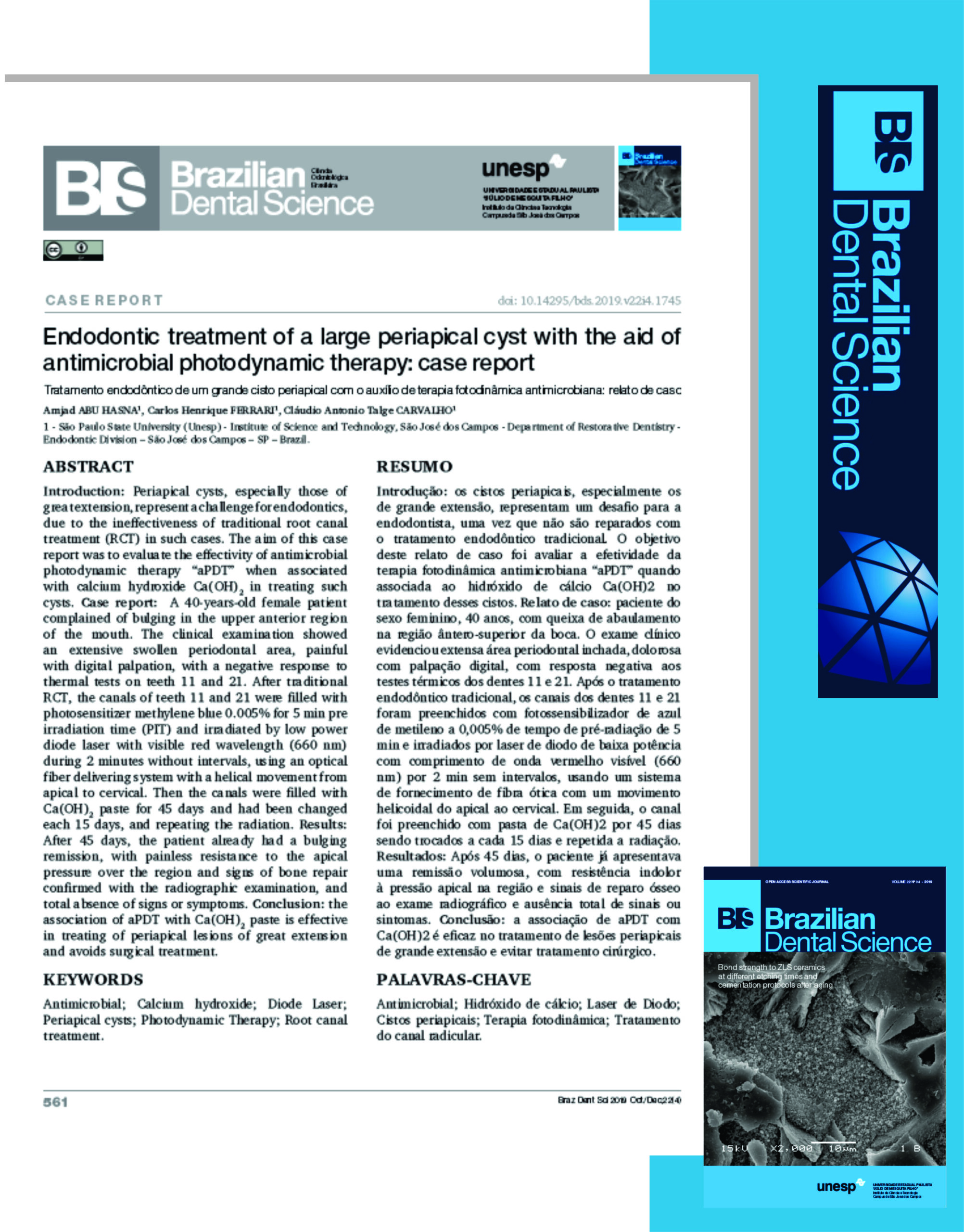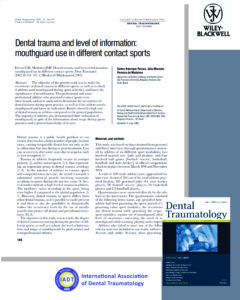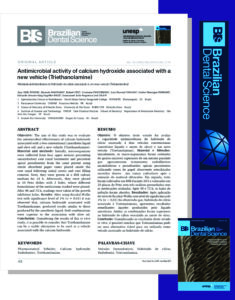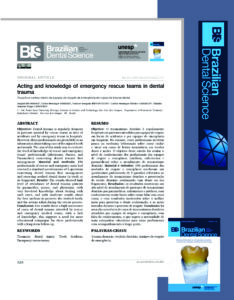Trabalho publicado na BDS em parceria com os colegas da UNESP, Prof. Dr. Cláudio Talge de Carvalho e o doutorando Prof. Amjad Abu Hasna.
In: Machado, Ricardo. Endodontia: Princípios Biológicos e Técnicos. Disponível em: Grupo GEN, Grupo GEN, 2022:
Suscetibilidade dos microrganismos à terapia fotodinâmica
A terapia fotodinâmica apresenta distinta efetividade de acordo com a população microbiana. Bactérias gram-positivas são mais suscetíveis à sua ação comparadas às gram-negativas, o que se deve a diferenças fisiológicas entre esses microrganismos. Bactérias gram-positivas apresentam membrana externa relativamente porosa, formada por espessa camada de peptidioglicanos e ácido lipoteicoico. Essas características permitem maior difusão do fotossensibilizante para dentro da bactéria. Portanto, bactérias gram-positivas podem ser eliminadas por vários corantes e doses mais baixas de irradiação. Bactérias gram-negativas possuem membrana externa mais delgada, porém mais complexa estruturalmente, contendo proteínas com função de porinas, lipopolissacarídeos e lipoproteínas. Tais componentes fazem com que sua membrana externa seja mais resistente à penetração de substâncias.66, Fungos têm parede celular constituída por uma camada espessa de betaglucano e quitina, o que promove uma barreira de permeabilidade intermediária comparada à das bactérias gram-positivas e gram-negativas.
No entanto, a fotossensibilização de bactérias é associada à carga do fotossensibilizante. Por apresentar carga positiva, baixo peso molecular e ser hidrofílico, o azul de metileno é capaz de interagir com macromoléculas lipopolissacarídicas aniônicas e penetrar através de membranas externas menos permeáveis, como as encontradas em bactérias gram-negativas.85
Soukos et al. (2006) investigaram os efeitos da terapia fotodinâmica em canais radiculares de dentes extraídos infectados experimentalmente com patógenos endodônticos. Foi utilizado azul de metileno com 25 μg/mℓ de concentração irradiado com laser de diodo com 30 J/cm2 de potência e 665 nm de comprimento de onda acoplado a uma fibra óptica. Todas as espécies bacterianas foram eliminadas, com exceção do Enterococcus faecalis (somente 53% de lise). Entretanto, ao aumentar a fluência de energia para 222 J/cm2, esse microrganismo foi eliminado em 97% dos espécimes.
Diferenças na suscetibilidade bacteriana também são observadas de acordo com a maneira em que os microrganismos estão dispostos. Organizados em biofilme, estes encontram-se protegidos por uma matriz polissacarídica; logo, são menos suscetíveis a diferentes estratégias antimicrobianas, incluindo a terapia fotodinâmica.68,86
Bergmans et al. (2008) avaliaram a capacidade antimicrobiana da terapia fotodinâmica contra cepas de Streptococcus anginosus, Enterococcus faecalis e culturas mistas de Enterococcus faecalis e Fusobacterium nucleatum em canais radiculares de dentes extraídos. Na forma planctônica ou em monocamadas, os microrganismos foram facilmente eliminados. Contudo, a terapia fotodinâmica demonstrou ser muito menos efetiva quando estes se encontravam organizados em biofilmes.
Upadya e Kishen (2010) compararam a eficácia da terapia fotodinâmica em suspensões planctônicas e monoespécies de biofilmes contendo Enterococcus faecalis e Pseudomonas aeruginosa. Segundo os resultados do estudo, modificações na formulação do fotossensibilizante aumentaram a eficácia antibacteriana da terapia fotodinâmica contra microrganismos organizados em biofilmes.
A reduzida sensibilidade de biofilmes à terapia fotodinâmica é atribuída à dificuldade de penetração do corante. Assim, vários métodos têm sido estudados com o objetivo de minimizar essa limitação.
Segundo George e Kishen (2008), a inclusão de um agente oxidante e de um transportador de oxigênio na formulação do azul de metileno possibilitou o aumento do potencial de foto-oxidação e geração de oxigênio singleto, facilitando o rompimento da matriz polissacarídica de biofilmes de Enterococcus faecalis. Os mesmos autores, em outro estudo realizado também em 2008, concluíram que a utilização de um inibidor específico de bomba de efluxo microbiano adicionado ao azul de metileno foi capaz de aumentar a eficácia da terapia fotodinâmica contra Enterococcus faecalis organizados em biofilme.
https://ferrariendodontia.com.br/endodontia-tratamento-canal-itatiba-lesao-periapical/





